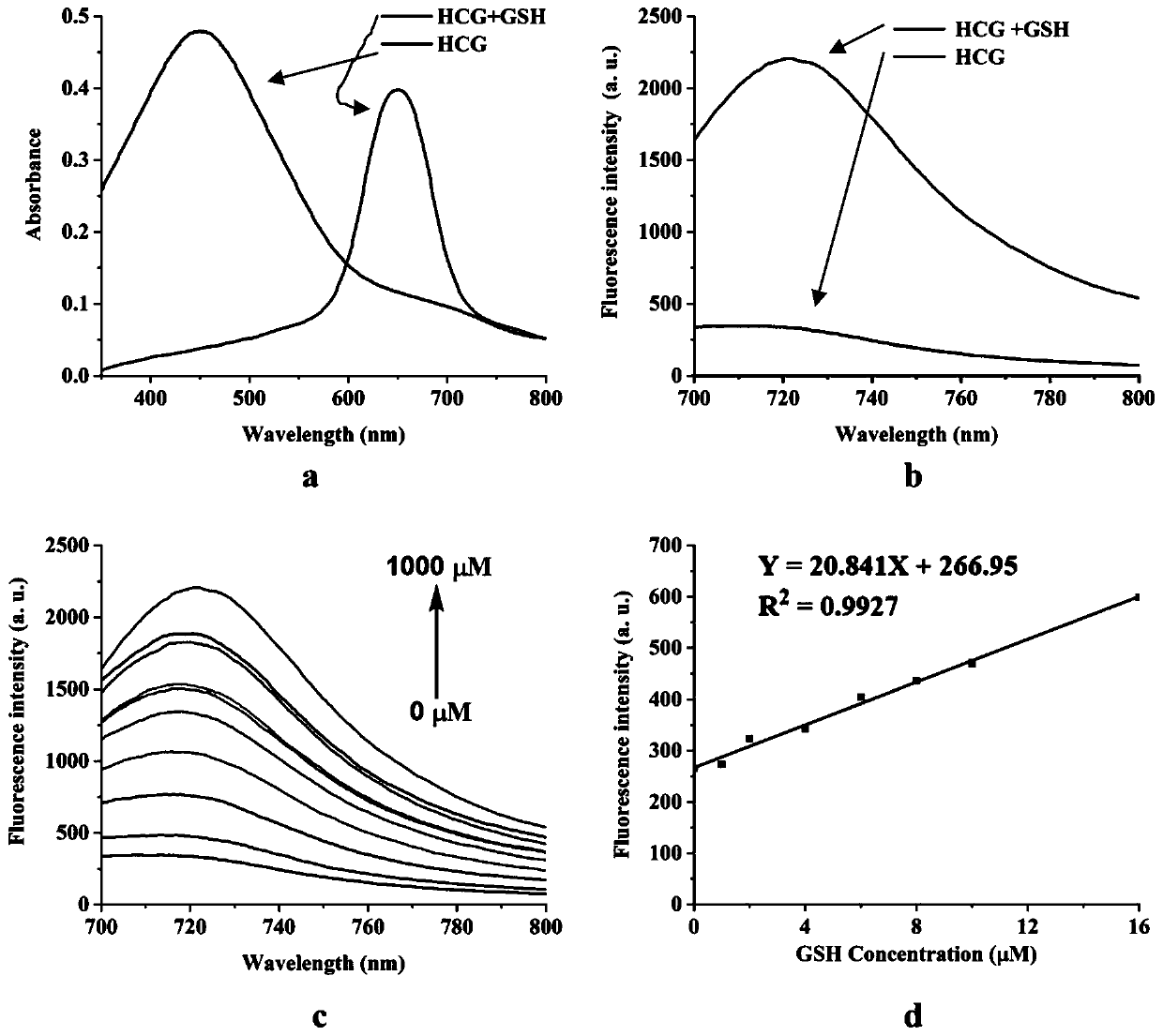Near-infrared fluorescent probe for identifying glutathione and its preparation and application
A fluorescent probe, glutathione technology, applied in the direction of fluorescence/phosphorescence, luminescent materials, chemical instruments and methods, etc., can solve the problems of inability to selectively identify glutathione, lack of specificity, etc., and achieve good real-time tracking and quantification, high sensitivity and specificity, low photon absorption effect
- Summary
- Abstract
- Description
- Claims
- Application Information
AI Technical Summary
Problems solved by technology
Method used
Image
Examples
preparation example Construction
[0049] The preparation method of the above-mentioned probe, in general, can use 2,3,3-trimethyl-3H-indole, cyclohexanone as the starting material, through methyl substitution, and N,N-dimethyl formaldehyde Amide condensation, and then the two undergo Aldol condensation reaction to obtain cyanine dyes, and finally react cyanine dyes with anilines to obtain near-infrared fluorescent probes containing Schiff base structures. For any one of the above preparation methods, the solvent can be selected from: acetonitrile, methanol, N,N-dimethylformamide, water, ethyl acetate, petroleum ether; the reaction temperature can be selected arbitrarily within the range of 25°C-100°C .
[0050] Of course, it is also possible to directly use commercially available cyanine dyes as raw materials and directly react them with anilines to obtain near-infrared fluorescent probes containing Schiff base structures.
[0051] The on-off near-infrared fluorescent probe of the present invention can be use...
Embodiment 1
[0054] In the present invention, the on-off near-infrared fluorescent probe HCG that can be used for glutathione detection in living cells and living bodies (such as mice) has a synthetic route as shown in the following reaction formula:
[0055]
[0056] 2,3,3-trimethyl-3H-indole and cyclohexanone can be used as starting materials, and the on-off near-infrared fluorescent probe HCG can be obtained through 4-step reaction; the preparation process is simple and the operation steps Less, strong maneuverability. Concrete reaction step can be as follows:
[0057][1] Add 2,3,3-trimethyl 3H indole (1g, 6.28mmol) and methyl iodide (1.2g, 8.45mmol) solution to acetonitrile, and reflux in an oil bath at 100°C for 12h. The reaction was monitored by thin layer chromatography (TLC). After the reaction was completed, the mixture was cooled to room temperature. The solvent was evaporated under reduced pressure, and the crude product was precipitated and filtered to obtain a pink solid...
Embodiment 2
[0062] About the fluorescent response of the on-off near-infrared fluorescent probe HCG to glutathione (GSH):
[0063] The final concentration of fixed HCG was 10 μM, the final concentration of GSH was (0, 10, 20, 40, 60, 80, 100, 200, 500, 1000 μM), reacted at 37 ° C for 15 minutes, and measured the concentration curve. The results showed that: the fluorescence intensity value with time or GSH The concentration increases, and has a good linear relationship. The calculated detection limit is 0.25 μM, indicating that the off-off near-infrared fluorescent probe can quantitatively detect GSH under the physiological condition of pH=7.4. At the same time, it is found that the probe itself has only a short wave peak (450nm), and after reacting with glutathione, it shows as a long emission peak (653nm) (such as figure 1 a to d in), indicating that the probe has on-off optical properties.
PUM
 Login to View More
Login to View More Abstract
Description
Claims
Application Information
 Login to View More
Login to View More - R&D Engineer
- R&D Manager
- IP Professional
- Industry Leading Data Capabilities
- Powerful AI technology
- Patent DNA Extraction
Browse by: Latest US Patents, China's latest patents, Technical Efficacy Thesaurus, Application Domain, Technology Topic, Popular Technical Reports.
© 2024 PatSnap. All rights reserved.Legal|Privacy policy|Modern Slavery Act Transparency Statement|Sitemap|About US| Contact US: help@patsnap.com










